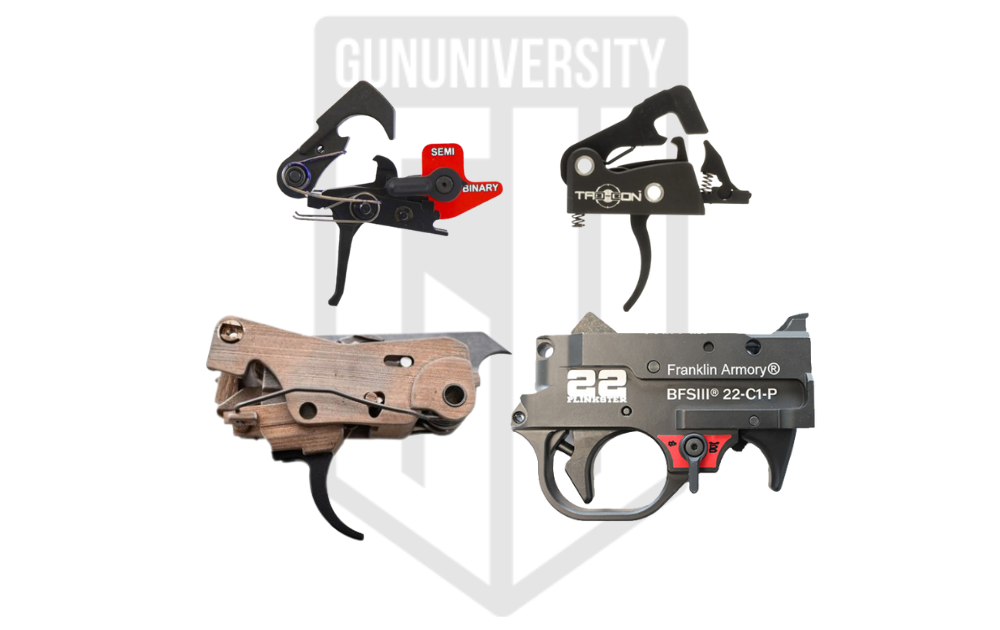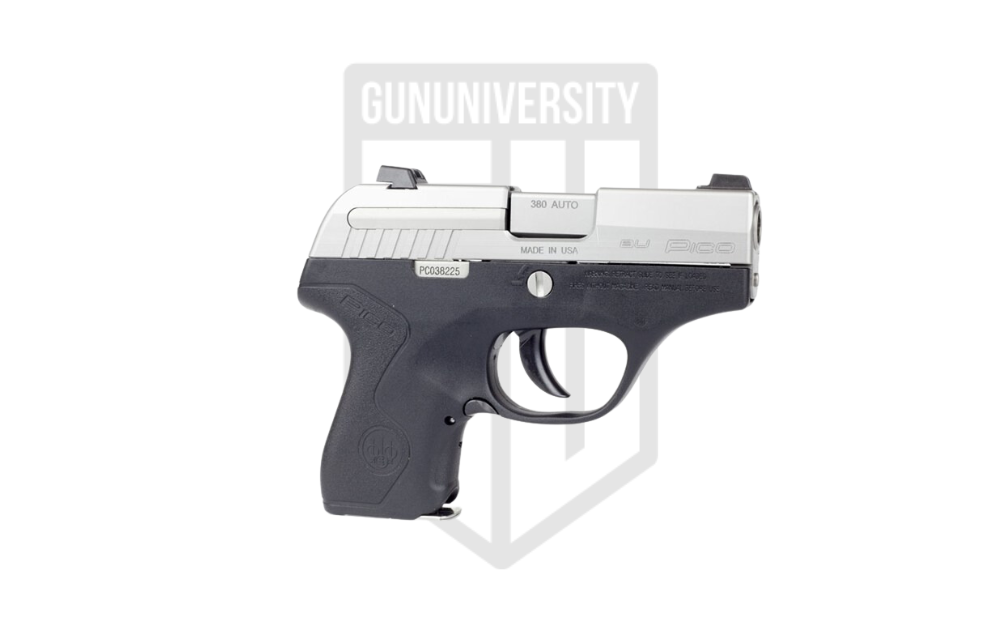7mm-08 Remington vs 30-06 Springfield: Ammo Comparison
Considering that the 7mm-08 Remington’s parent case is the 308 Win and the 30-06 Springfield is frequently compared to 308 Win, it only makes sense to compare 7mm-08 and 30-06, too. They’re both more commonly used among hunters, although they’re sometimes also used for brush guns or truck guns. And, of course, neither the 7mm-08 nor the 30-06 Springfield are considered the latest and greatest. What they both are, though, are tried-and-true cartridges with dedicated followings. So which one’s better? Let’s find out.
7mm-08 Remington vs. 30-06 Springfield Specifications
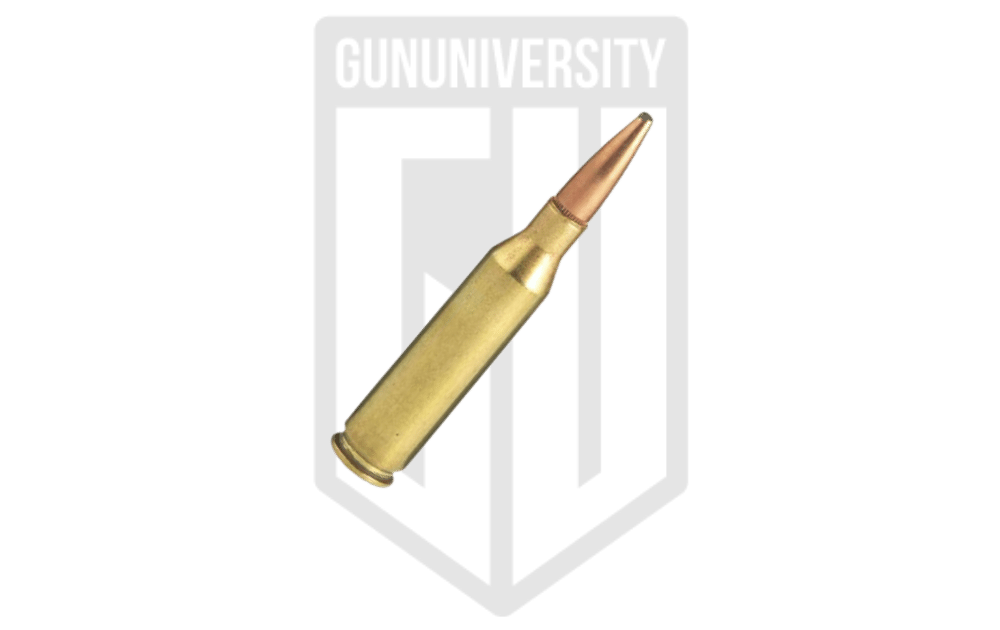
7mm-08 Remington
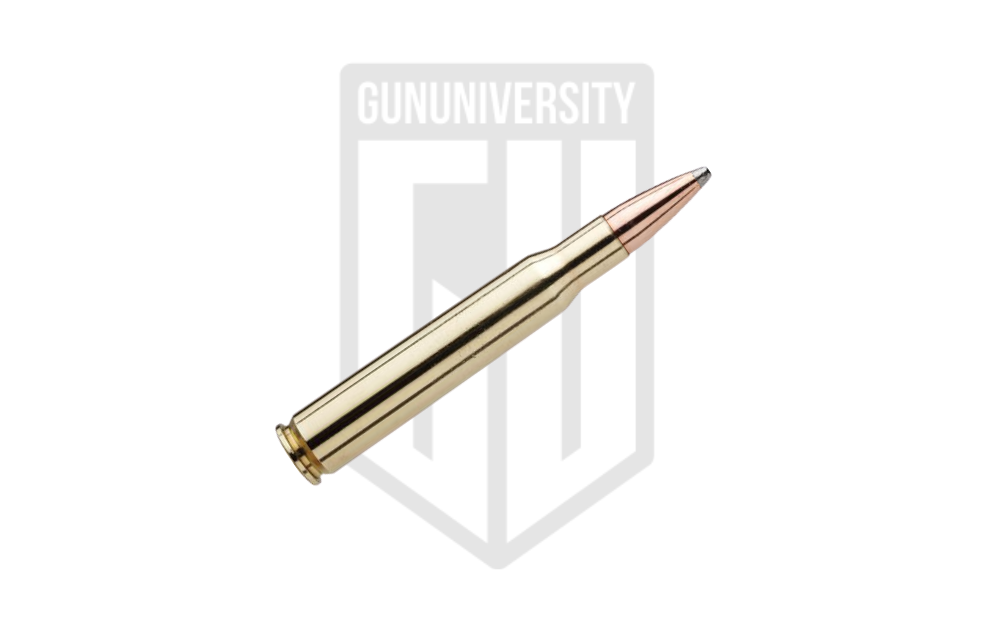
.30-06 Springfield
Why compare 7mm-08 vs. 30-06 Springfield?
Perhaps the most obvious reason to compare 7mm-08 and 30-06 Springfield is for hunting. Although the 7mm-08 is much newer, its specifications suggest the much older 30-06 Springfield might outdo it in some areas. If you’re trying to choose a hunting rifle—especially a bolt-action—you’ve probably been debating the pros and cons of 7mm-08 and 30-06 Springfield. That doesn’t mean we limited the debate to hunters alone.
It might come as a surprise how many people use their bolt-actions for home defense or perhaps as truck guns. A carbine length bolt-action can be a legit defensive weapon, and that means 7mm-08 and 30-06 Springfield might be considered. Then there’s the fact that both can be used to ring still as well. How do you choose? We did the homework for you.
It’s the cartridge vs. cartridge face-off: 7mm-08 vs. 30-06 Springfield.
7mm-08 Remington Review
The 7mm-08 is a cartridge that shoots flatter than its parent case, the 308 Win, and is favored by a lot of hunters. It’s great for everything from varmints to deer and some will even say it can take an elk or moose. It’s not just for fans of bolt-action rifles, either; bolt-action pistols are great for hunting and are frequently available in 7mm-08.
7mm-08 Rem History and Purpose
Remington designed the 7mm-08 in 1980. It was based on the 308 Win and created to appeal to hunters. The first guns the manufacturer made chambered in it were their popular Model 700 and 788 rifles. And while they marketed it to hunters, they also meant it to be a versatile cartridge that target shooters could also use. Over the decades, it’s enjoyed some use on the target side of the gun world, but it does seem to be largely utilized by hunters.
This cartridge is similar to the 7mm/308, a wildcat cartridge that was gaining popularity at the time of its design. Remington had mainstreamed other wildcats before and after, so it comes as no surprise. Its parent case is officially 308 Win with the case necked down for the smaller diameter bullet. Case length is also a little longer than on the 308 Win. The idea was to produce a good hunting cartridge that performed similarly to the 308 Win, only with less felt recoil and a flatter trajectory. Those things were definitely accomplished.
One thing some gun owners get frustrated with regarding 7mm-08 is ammo availability. It doesn’t enjoy the same widespread use as some cartridges and while there’s a fair bit of ammo out there for it, finding it at your local gun store can be a challenge. Same goes for firearms chambered in it. They do exist, but they can be more difficult to find than others. Even so, 7mm-08 remains a solidly performing cartridge with a lot to recommend it for hunting and target shooting alike.
Pros and Cons of 7mm-08 vs 30-06 Springfield
- Trajectory – 7mm-08 delivers a flatter trajectory than the 30-06 Springfield, which translates to greater range.
- Recoil – The 7mm-08 produces significantly less felt recoil than 30-06 Springfield does.
- Range – 7mm-08 is good for hunting with a further ethical effective range than 30-06 Springfield.
- Bullet Diameter – The 7mm-08 bullet diameter is smaller than that of the 30-06 Springfield, meaning smaller wound cavities on game.
- Case Capacity – 7mm-08’s case capacity is significantly less than 30-06 Springfield.
- Availability – 7mm-08 is harder to find ammunition for than 30-06
Best Ammo for 7mm-08
Quite a few hunting loads are offered for the 7mm-08, most of which deliver great results on target. These are our picks for 7mm-08:
Practice Ammo

Fiocchi 7mm-08 Remington 139 Gr Interlock BTSP
Marketplace | Cost Per Round |
| Gun Deals | $1.27 |
| Optics Planet | $1.85 |
Hunting Ammo
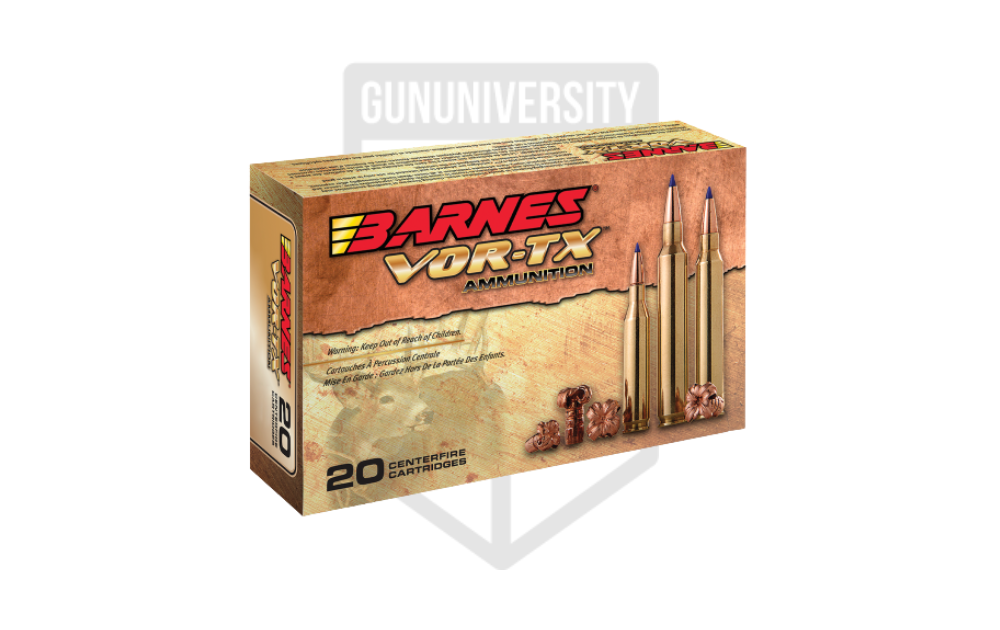
Barnes VOR-TX 7mm-08 Remington 120 Gr Polymer Tipped Spitzer Boat Tail
Marketplace | Cost Per Round |
| Gun Deals | $1.69 |
| Firearms Depot | $2.06 |
| Guns.com | $2.34 |
Target Ammo
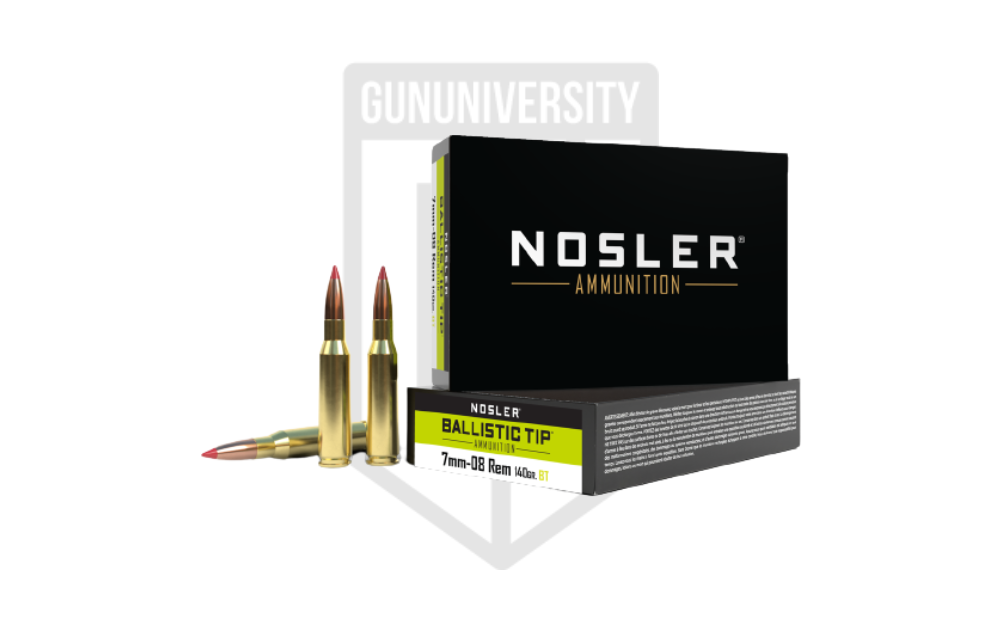
Nosler Ballistic Tip 7mm-08 Remington 140 Gr
Marketplace | Cost Per Round |
| Gun Deals | $1.63 |
| Firearms Depot | $1.96 |
| Guns.com | $2.19 |
30-06 Springfield Review
Although the 30-06 got its start in the military at the start of the 20th century, it didn’t take long for it to become widely used and accepted for hunting. The cartridge has a reputation for being capable of taking any game in North America, and it’s proven itself countless times. And while some classic firearms collectors and target shooters still enjoy it, at this point it’s almost entirely the purview of hunters.
30-06 Springfield History and Purpose
When the 30-06 Springfield was created in the early 1900s, it was because the military needed a cartridge that produced greater velocity in a lighter weight than what they were using. The 30-06 Springfield’s parent case is the 30-03 Springfield, the latter of which being what was being used by the military back then. 30-06 did end up becoming the replacement standard issue rifle cartridge in 1906 and it continued being used for various things within the military until the 1970s.
Before it became known as the 30-06 Springfield, they designated this cartridge as “cartridge, ball, caliber .30, Model of 1906.” The M1903 Springfield rifle used by the military was the first to be chambered in it. This involved altering the guns so they’d work with the then-new cartridge. Eventually, 30-06 Springfield was chambered in guns like the M1917 Enfield, M1 Garand, and BAR (Browning Automatic Rifle).
Today the 30-06 Springfield isn’t as commonly used as it once was, but it’s still widely available in bolt-action rifles and some lever-actions, too. It might seem to have fallen out of favor among hunters, but it still has a place as a do-it-all round.
Pros and Cons of 30-06 Springfield vs 7mm-08 Remington
- Bullet Size – 30-06 Springfield creates larger, more effective wound cavities on game animals at closer distances than 7mm-08.
- Versatility – 30-06 Springfield really is a great cartridge for use on any and all game animals in North America.
- Velocity – The 30-06 Springfield loses velocity and energy more quickly than 7mm-08 does.
- Recoil – The 30-06 Springfield produces significantly more felt recoil than 7mm-08.
Best Ammo for 30-06 Springfield
You should not have too much trouble finding 30-06 ammo. These are some of our top picks:
Practice Ammo
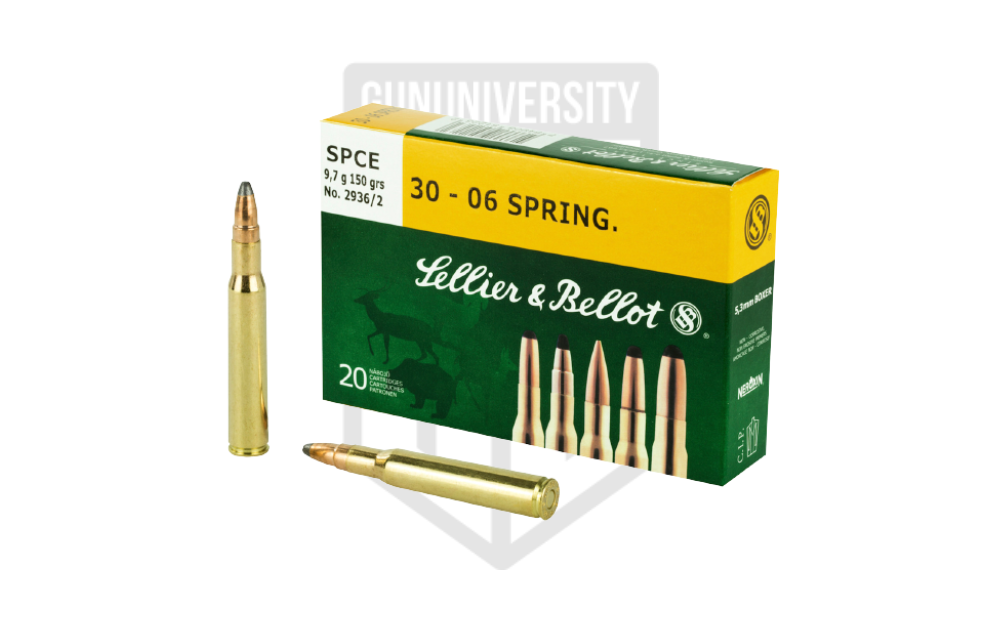
Sellier & Bellot 30-06 Springfield 150 grain FMJ
Marketplace | Cost Per Round |
| Gun Deals | $1.05 |
| Palmetto State Armory | $1.25 |
Match Ammo
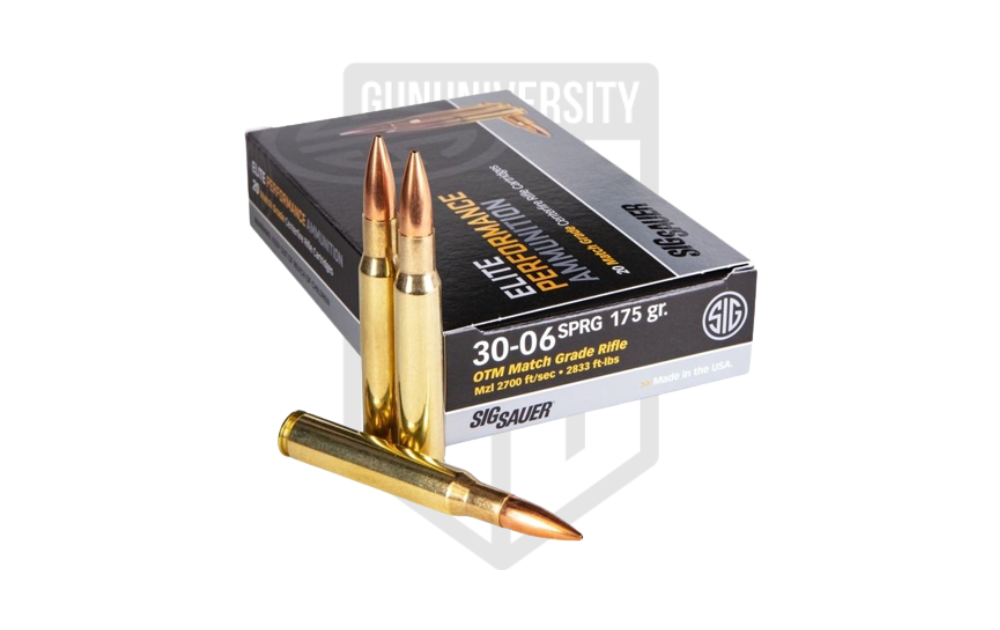
SIG Sauer Elite Performance 30-06 Springfield 175 Gr OTM
Marketplace | Cost Per Round |
| Gun Deals | $1.55 |
| Gritr Sports | $1.59 |
| Guns.com | $2.04 |
Hunting Ammo
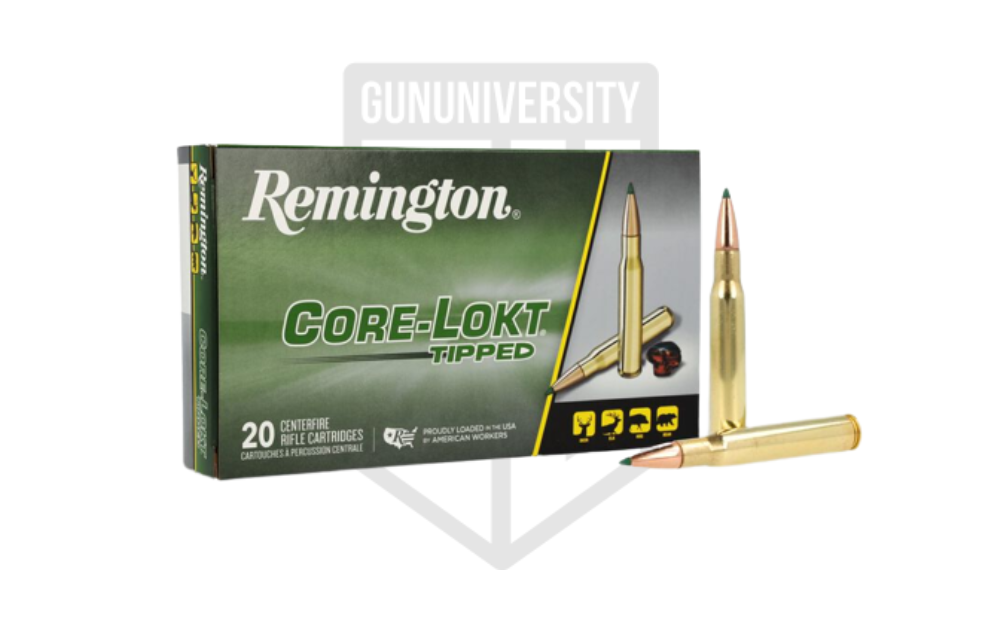
Remington Core-Lokt 30-06 Springfield 165 Gr Polymer Tipped
Marketplace | Cost Per Round |
| Gun Deals | $1.44 |
| Gritr Sports | $1.46 |
| Firearms Depot | $1.79 |
Ballistics Comparison: 7mm-08 vs. 30-06 Springfield
It’s time to move on to the ballistics comparison of the two cartridges. Interestingly, the 7mm-08 has less case capacity than the 30-06 Springfield, but SAAMI lists the two as having nearly identical maximum pressures. Does one cartridge come out on top or are they mostly equal? Check it out.
To compare cartridges beyond 100 yards, we’re going to take a look at a few different loads. First, let’s consider Nosler Ballistic Tip 7mm-08 Remington 140 grain with a ballistic coefficient of 0.485 against Remington Core-Lokt 30-06 Springfield 165 grain Polymer Tipped with a ballistic coefficient of 0.447.
| Distance (yards) | Nosler Ballistic Tip 7mm-08 Remington 140 grain Velocity (fps) | Nosler Ballistic Tip 7mm-08 Remington 140 grain Energy (ft-lbs) | Remington Core-Lokt 30-06 Springfield 165 grain Polymer Tipped Velocity (fps) | Remington Core-Lokt 30-06 Springfield 165 grain Polymer Tipped Energy (ft-lbs) |
|---|---|---|---|---|
| 0 | 2825 | 2480 | 2820 | 2913 |
| 100 | 2636 | 2159 | 2616 | 2507 |
| 200 | 2454 | 1872 | 2421 | 2147 |
| 300 | 2280 | 1616 | 2234 | 1829 |
| 400 | 2113 | 1388 | 2056 | 1549 |
| 500 | 1953 | 1186 | 1886 | 1303 |
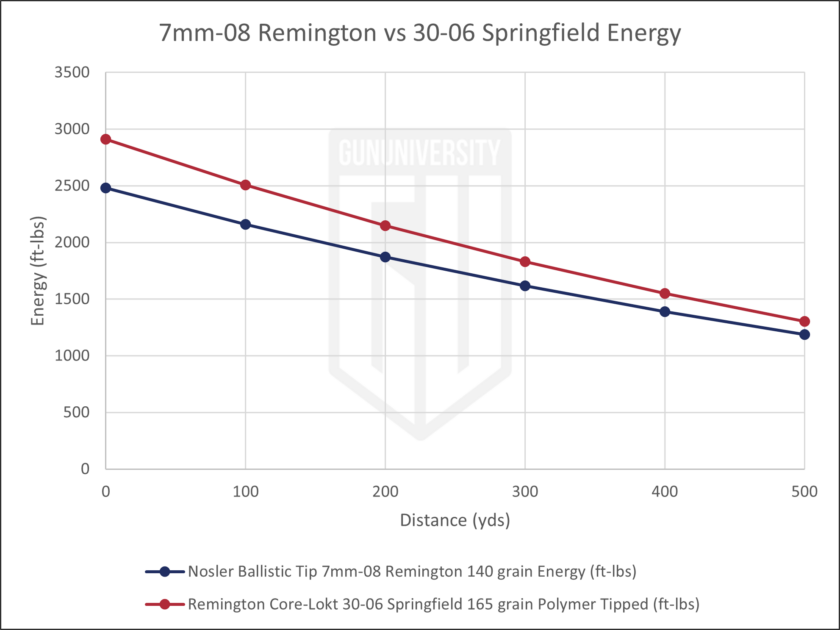
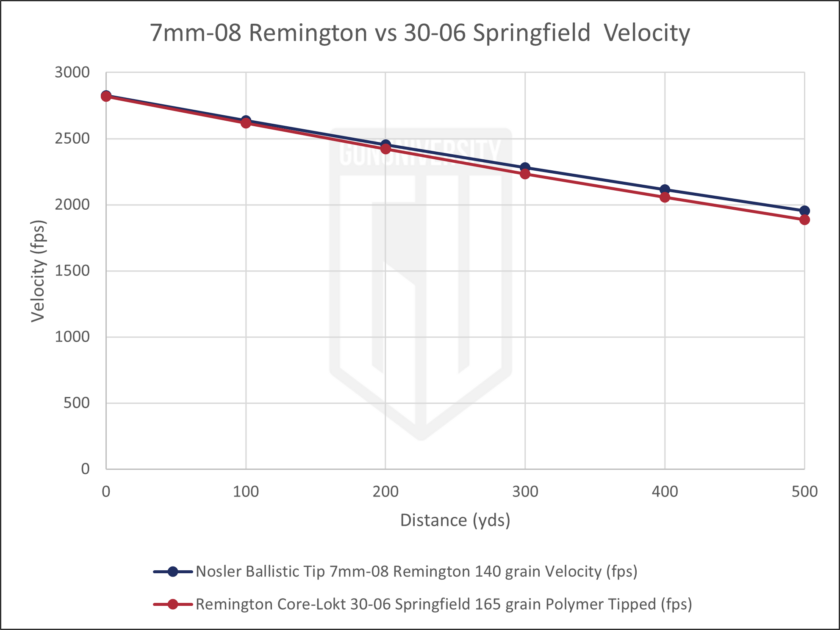
With these loads, 7mm-08 and 30-06 Springfield produce similar velocity from the muzzle and remain similar out to 500 yards. However, the 30-06 Springfield starts at the muzzle with quite a bit more energy and maintains that lead throughout. This suggests that 30-06 Springfield may be superior for energy on target.
If we change over to different loads and compare Fiocchi 7mm-08 Remington 139 grain Interlock BTSP with a ballistic coefficient of 0.486 and Sellier & Bellot 30-06 Springfield 150 grain FMJ with a ballistic coefficient of 0.290, what happens?
| Distance (yards) | Fiocchi 7mm-08 Remington 139 grain Interlock BTSP Velocity (fps) | Fiocchi 7mm-08 Remington 139 grain Interlock BTSP Energy (ft-lbs) | Sellier & Bellot 30-06 Springfield 150 grain FMJ Velocity (fps) | Sellier & Bellot 30-06 Springfield 150 grain FMJ Energy (ft-lbs) |
|---|---|---|---|---|
| 0 | 2800 | 2420 | 2953 | 2905 |
| 100 | 2613 | 2108 | 2634 | 2311 |
| 200 | 2434 | 1829 | 2336 | 1818 |
| 300 | 2262 | 1579 | 2058 | 1411 |
| 400 | 2097 | 1357 | 1801 | 1080 |
| 500 | 1939 | 1160 | 1568 | 819 |
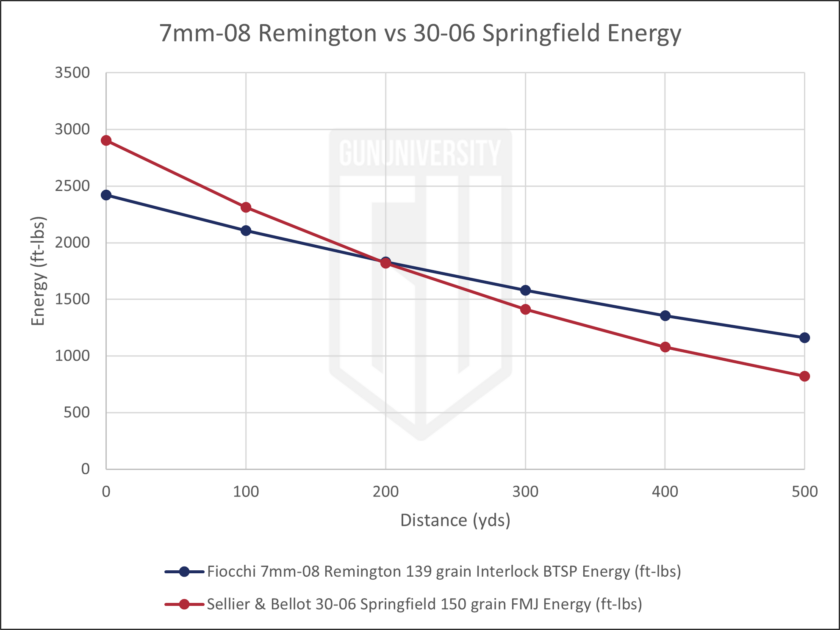
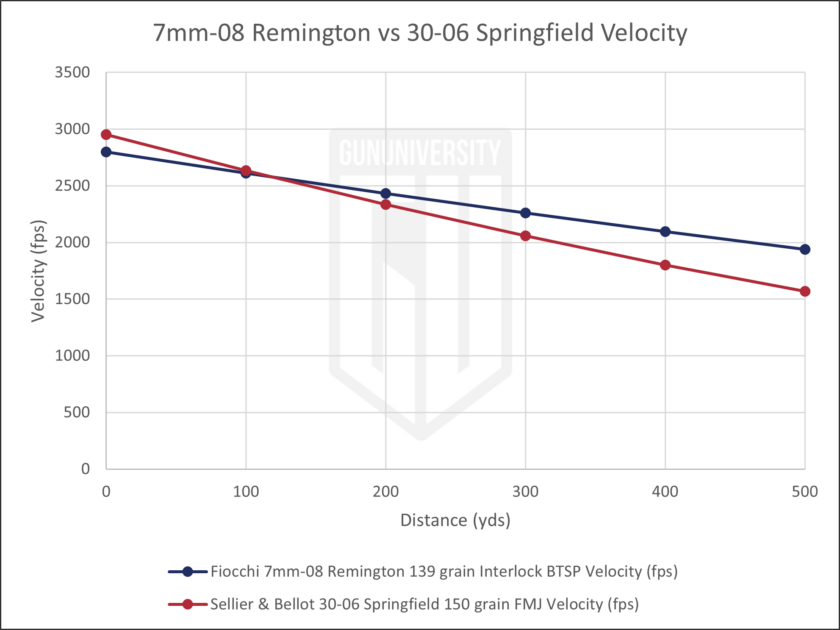
Unlike the first ballistics comparison, this time the 30-06 Springfield doesn’t outdo 7mm-08 for energy. It does start out producing greater energy, but after 200 yards the 30-06 Springfield is losing energy faster than the 7mm-08. As for velocity, 30-06 Springfield loses velocity faster as well. Let’s take a look at drop and drift rate.
| Distance (yards) | Fiocchi 7mm-08 Remington 139 grain Interlock BTSP Drop (inches) | Fiocchi 7mm-08 Remington 139 grain Interlock BTSP Wind Drift (inches) | Sellier & Bellot 30-06 Springfield 150 grain FMJ Drop (inches) | Sellier & Bellot 30-06 Springfield 150 grain FMJ Drift (inches) |
|---|---|---|---|---|
| 0 | -1.50 | 0.03 | -1.50 | 0.03 |
| 100 | 0.01 | 0.0 | 0.00 | 1.09 |
| 200 | -3.59 | 0.50 | -3.54 | 4.50 |
| 300 | -13.07 | 6.43 | -13.49 | 8.87 |
| 400 | -29.36 | 11.82 | -31.71 | 20.27 |
| 500 | -53.58 | 19.16 | -60.72 | 33.84 |
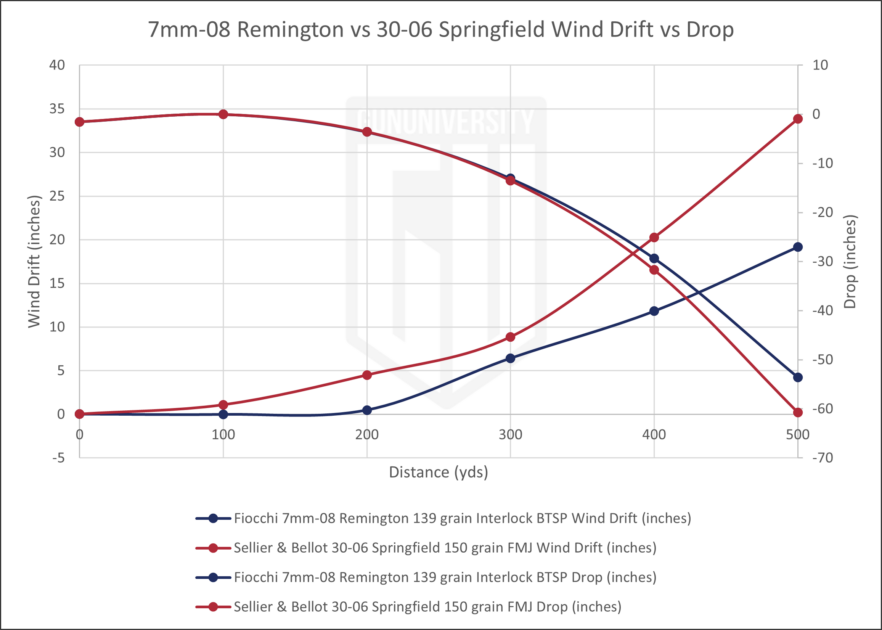
The drop rate of these two loads is similar out to 400 yards, after which the 30-06 Springfield drops more precipitously. As for drift, 30-06 Springfield definitely drifts quicker than 7mm-08 despite having a slightly heavier bullet. This suggests that, as mentioned before, 30-06 Springfield delivers a bit better at closer ranges than 7mm-08, but 7mm-08 offers a flatter trajectory overall.
Our Take – 7mm-08 vs. 30-06 Springfield
From the perspective of a hunter, the 30-06 Springfield is a logical choice for taking game at closer ranges. Not only is it effective on a wider range of predators and animals, but it delivers greater energy transfer on target. It has a longer history of success backing it in both military and hunting applications.
Of course, that doesn’t mean 7mm-08 isn’t extremely effective on a lot of game. And from a target shooting perspective, it has the 30-06 Springfield beat. As usual, it all comes down to what you’re using it for. Which one do you prefer?
Recent Posts
July 26, 2024
July 26, 2024
July 25, 2024

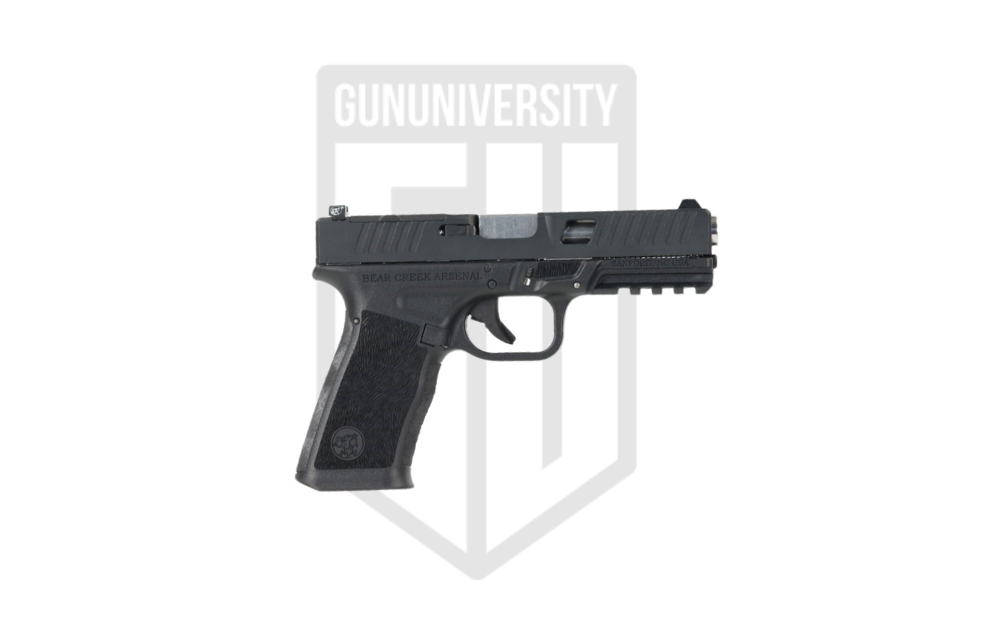
![The Best Shooting Hearing Protection in 2024 [Tested]](https://gununiversity.com/wp-content/uploads/2021/09/best-shooting-hearing-protection.jpg)
